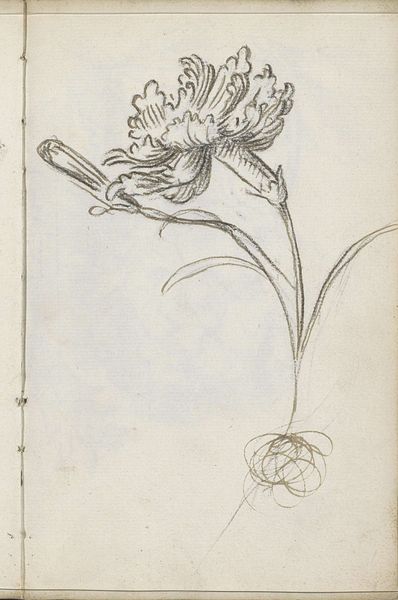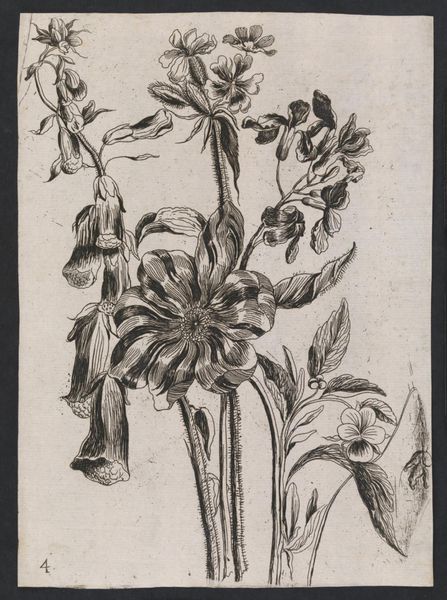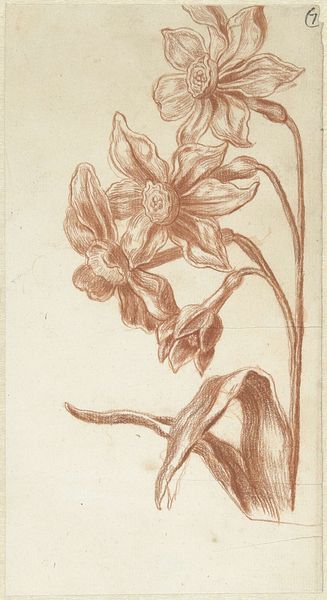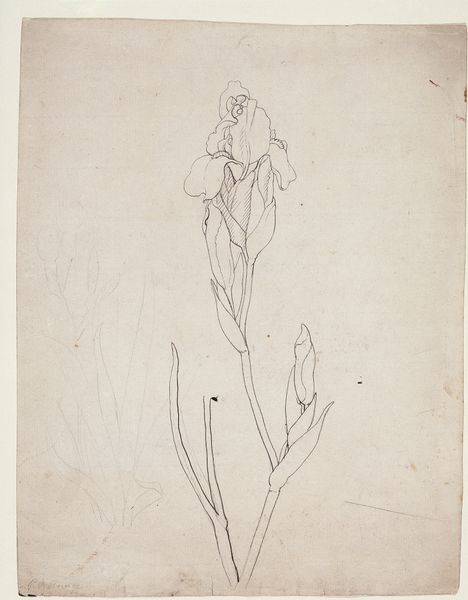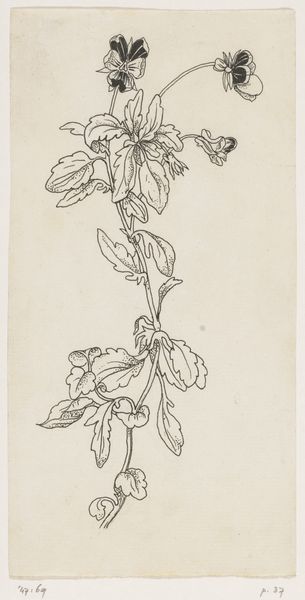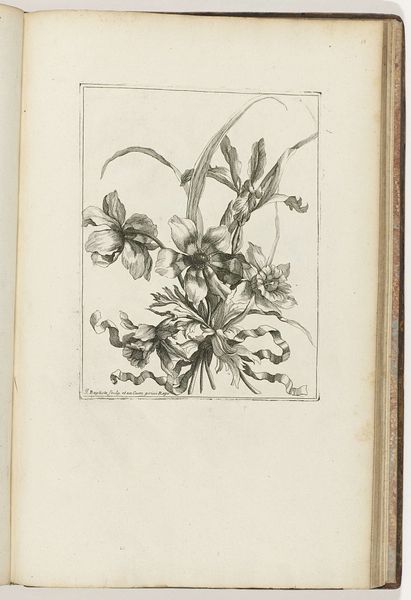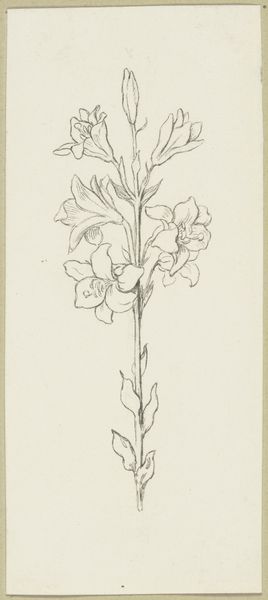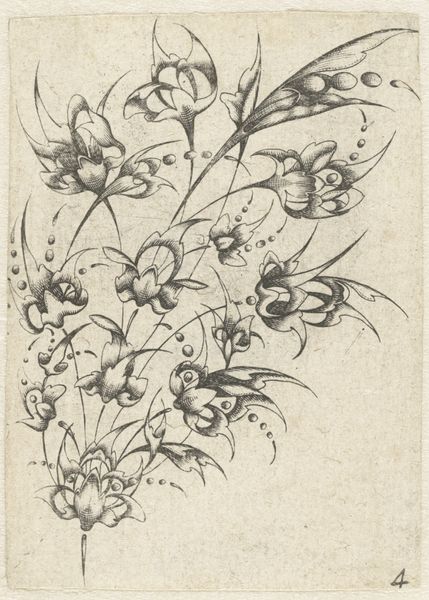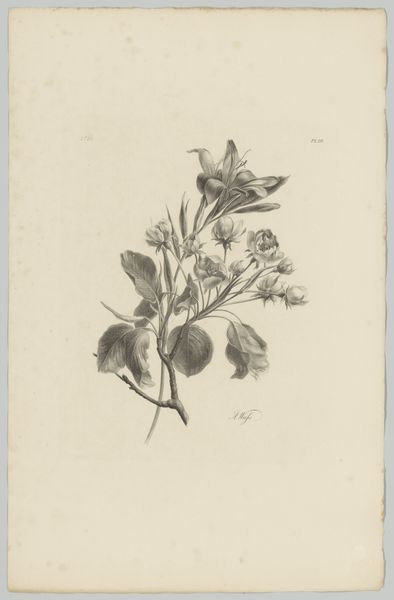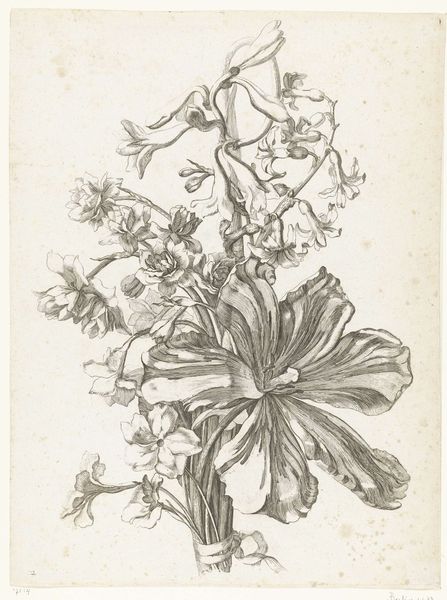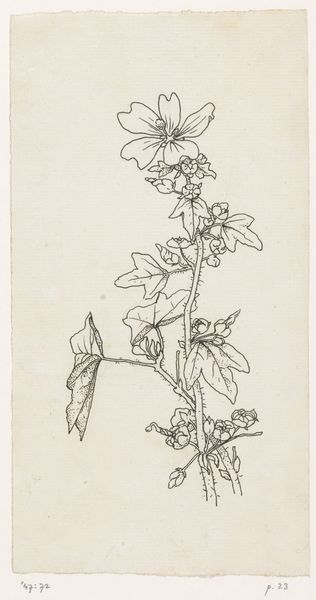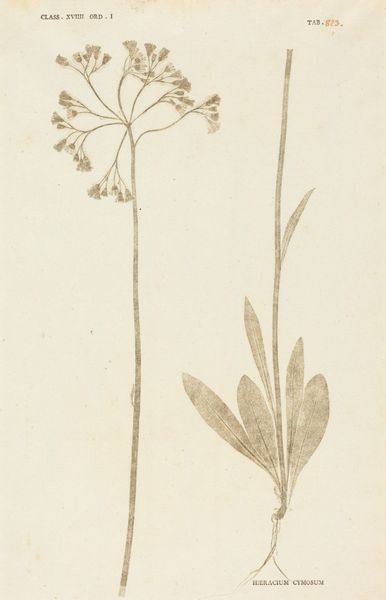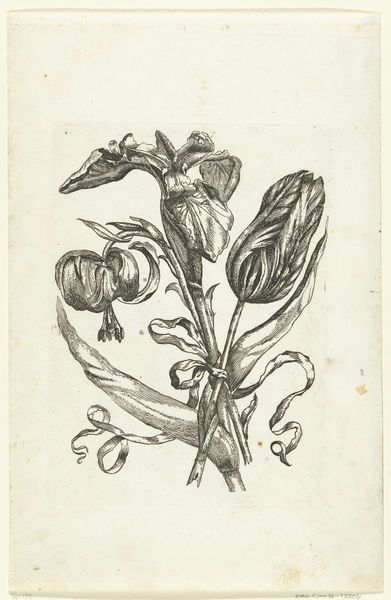
drawing, paper, pencil
#
drawing
#
paper
#
form
#
pencil
#
line
#
realism
Copyright: Rijks Museum: Open Domain
Curator: Looking at this simple but elegant study of irises, one can immediately appreciate the economy of means van Reysschoot employed. "Bloemen", dating roughly from 1710 to 1772, captures the form of these blooms with just pencil on paper. Editor: It feels remarkably delicate. There's a certain melancholic beauty to its monochrome rendering, a starkness that resonates beyond just floral representation. How do the historical cultivation and commodification of such floral imagery inform its place in art history, particularly considering class and gender dynamics? Curator: That's a valid point. Floral studies like these were often produced within the context of scientific illustration or as preparatory drawings for larger paintings, playing into notions of observing and classifying nature, processes driven largely by the bourgeoisie for economic and scientific ends. The availability of paper and pencils, and the skills to use them, were dependent on particular conditions of production. Editor: Exactly! These material realities shape our understanding of not only who could create such works, but also for whom they were intended. The drawing itself becomes a document reflecting broader socio-economic frameworks. Do we know anything about the artist's training, whether the artist benefited from access to resources or patronage? Curator: Van Reysschoot belonged to a family of artists; this access afforded a certain familiarity with materials and artistic training not available to other groups. While simple, the drawing gives evidence of formal skills, revealing how traditional modes of instruction shaped this natural form into art. Editor: The sketch emphasizes the intersection between artistic output and its material origins, prompting me to consider art's connection to labor and cultural value, particularly when we examine such intimate drawings. Curator: Reflecting on this work I am drawn back to its straightforward realism and technical competence and also the larger material reality that contributed to the conditions for the study’s very existence. Editor: I leave feeling that an artwork is inevitably tied to societal frameworks as a lens for assessing questions concerning labour, classification and value.
Comments
No comments
Be the first to comment and join the conversation on the ultimate creative platform.
